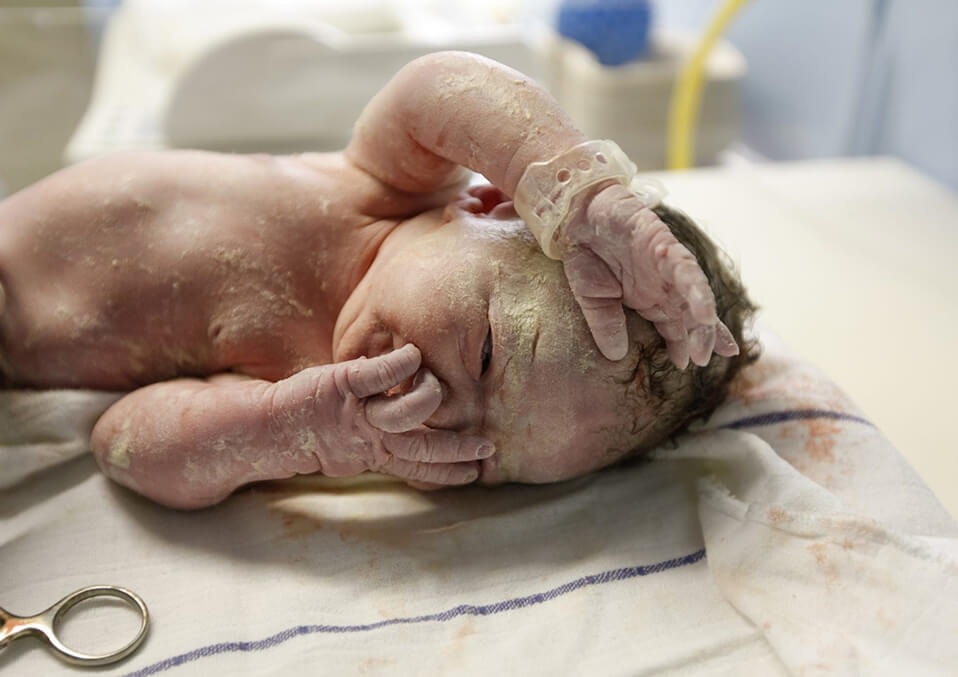
There are important things you need to know about vernix, especially for new mothers out there.
After the delivery of a baby, you might have noticed that the skin is covered in cheese-like, white patches or clumps. You are wondering whether to leave it alone or remove it.
This strange coating is known as the vernix, specifically vernix caseosa. It is important to note that it is beneficial for the baby. There are important things you need to know about vernix.
What is the vernix caseosa?
The vernix caseosa is a cheese-like, greasy coating that covers the skin of the baby during their time in the womb. It is comprised of shed skin cells and sebaceous secretions. Nevertheless, the vernix has an important function – protecting the fragile skin from being pickled by the amniotic fluid while in the uterus. This is one of the vital things you need to know about vernix.
Generally, the vernix shows up around week 19 of pregnancy and continues to thicken until week 34. This coating eventually sloughs off into the amniotic fluid in a few weeks and it is even swallowed by the baby. By week 40, the vernix is mostly gone.
Infants born earlier are likely to have more vernix than those born later. In case your baby arrives a few weeks before the due date, he/she might be well-coated with vernix. If born on time, the baby has minimal vernix left, usually in the skin folds or under the nails. If born late, the baby might have no vernix left at all.
Benefits of vernix caseosa

One of the things you need to know about vernix is its benefits. The vernix serves as a barrier between the skin of the baby and the surrounding amniotic fluid. It has the main purpose of protecting and hydrating the skin. There are also other vernix benefits such as the following:
- During pregnancy. The vernix that is swallowed by the baby can help nourish the developing gut bacteria.
- During labor. The oily, greasy texture of the vernix might function as a natural lubricant to lessen friction as the baby moves down the birth canal.
- After delivery. The vernix continues to protect the skin of the baby by helping retain moisture and ward off bacterial infections. It is also believed to help babies latch. The scent of the vernix might have a link in triggering neural connections in the brain of the baby for breastfeeding.
- For mothers. The vernix includes compounds that are believed to promote healing of the perineal wound, thus aiding in the recovery for vaginal births.
Today, it is becoming common to delay the first bath of the baby. This will help keep the vernix on the skin of the baby for some time.
How long should the vernix stay on the baby?

It is recommended to leave the vernix on the baby for at least 6 hours, and preferably 24 hours. Remember that there is no set time on when to bath your baby. If you are uncertain or require guidance, it is best to consult your pediatrician.
Final Thoughts
Now that you are familiar with the important things you need to know about vernix, it should not be an issue of concern anymore. Although the vernix caseosa might look unsightly on your baby, it has its share of benefits such as protection during the womb as well as other benefits during and after the delivery. With this in mind, consider leaving the skin of your newborn for a little while after birth, if possible. After a day or two, you can always clean your child so that he/she will be ready for the first photo.
Read also:


